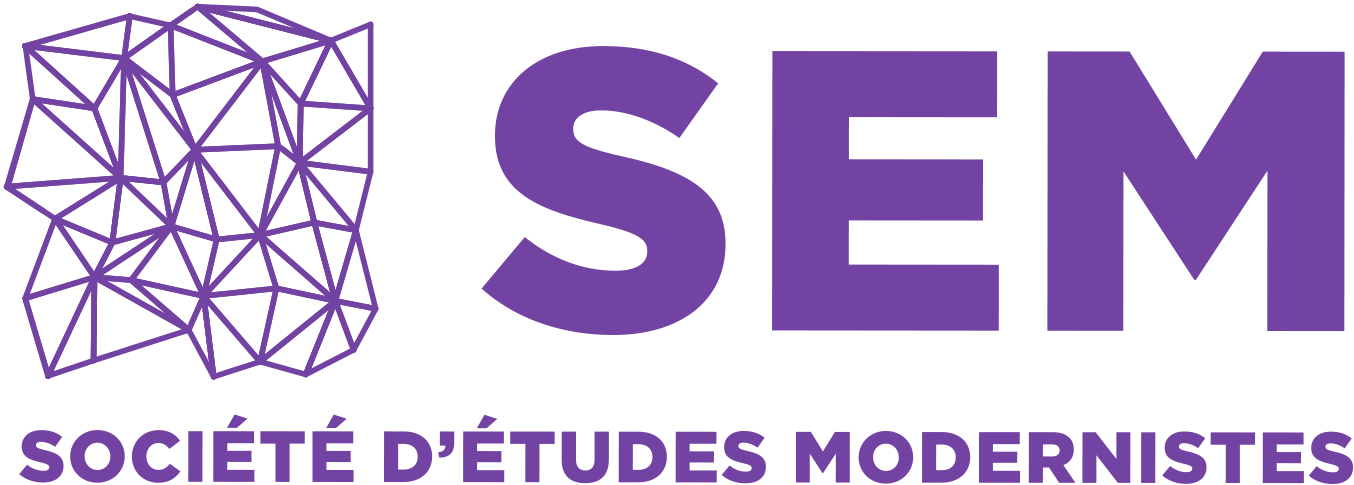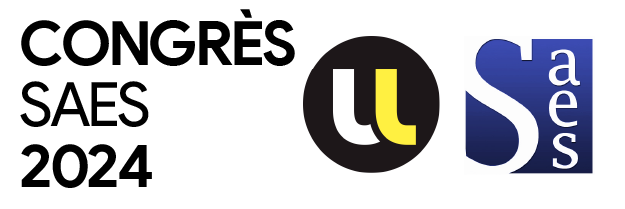SEM/SEW Workshop, SAES Conference, Nancy 2024
Responsables de l’atelier
Noëlle Cuny (Université de Haute Alsace), noelle.cuny@uha.fr
Monica Latham (Université de Lorraine), monica.latham@univ-lorraine.fr
Anne-Laure Rigeade (Université Paris-Est Créteil), anne-laure.rigeade@u-pec.fr
SESSION 1 : JEUDI 30 MAI 13h30-16h30
Passages et échanges
Modératrice : Anne-Laure Rigeade
- 13h30 Anne-Marie SMITH-DI BIASIO (Université Catholique de Paris) : Virginia Woolf Crossing the Border; Out of England with the SEW
- 14h Noëlle ROMNEY (Université Sorbonne Nouvelle) : Les traductions de textes anglophones dans la revue Commerce (1924-1932) et la création d’une littérature transnationale
- 14h30 Antoine PERRET (Université Sorbonne Nouvelle) : Orlando‘s Voyage In: Dressing Across Borders
- 15h Emilie GEORGES (Université Paris-Nanterre) : Relire Pound pour repenser le déplacement de la figure de poète à celle de penseur politique
- 15h30 Martina DELLA CASA (Université de Haute Alsace) : Lire le Typhoon entre les langues. Le cas d’Einaudi : Conrad, Gide et Mursia
SESSION 2 : VENDREDI 31 MAI 9h-10h30
Déplacements de frontières
Modérateur : Benoît Tadié
- 9h Henry CARMINES (Université Paris-Nanterre) : Journeys into the London Hyperobject with Henry James
- 9h30 Nina MILONET (Université de Lille) : Fantômes transnationaux dans Ulysses
- 10h Kit Kumiko TODA (Université de la Réunion) : Behind the Sensuous Curtain: T.S. Eliot and Disparate Experience
SESSION 3 : SAMEDI 1 JUIN 9h-10h30
SEM/SEW/SAGEF
Modératrice : Amy Wells
- 9h Valérie FAVRE (Université Paris 1 Panthéon-Sorbonne) : Les frontières de l’universel littéraire : Explorer la réception de Virginia Woolf au prisme intersectionnel de la classe, du genre et de la race
- 9h30 Margaret GILLESPIE (Université Franche-Comté) : Boundary Crossing in Jane Bowles’ Two Serious Ladies (1943)
- 10h Kathryn WOODS (University of Bristol) : Queer Mobility and Departure in Willa Cather’s My Antonia
SESSION 4 : SAMEDI 1 JUIN 11h-12h30
Voyages et transferts
Modératrice : Noëlle Cuny
- 11h Ludovic DIAS (Université de Lorraine) : Photos souvenirs et cartes postales : le tour du monde de E.M. Forster en images
- 11h30 Leila HAGHSHENAS (Université Catholique de l’Ouest) : Crossing Gender Borders in Vita Sackville-West’s Passenger to Teheran (1926)
- 12h Julie CHEVAUX (Lycée Frédérique Chopin, Nancy) : From Italian Virgins to British Motherhood: Vanessa Bell’s Modernism Across Borders

